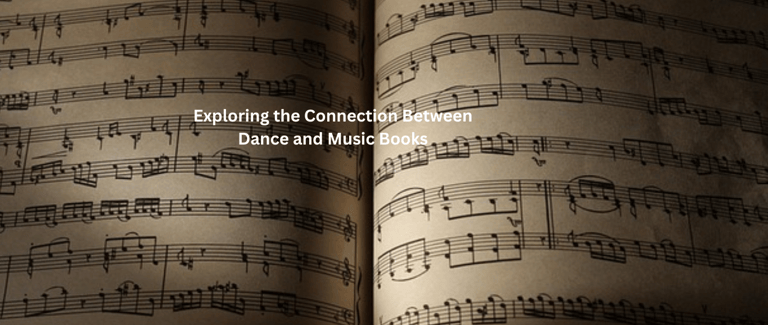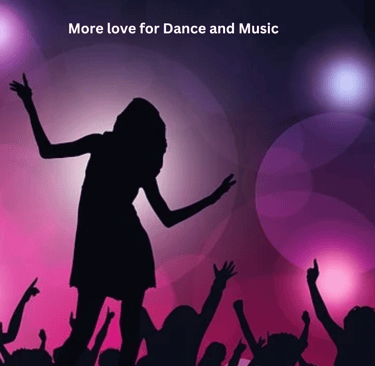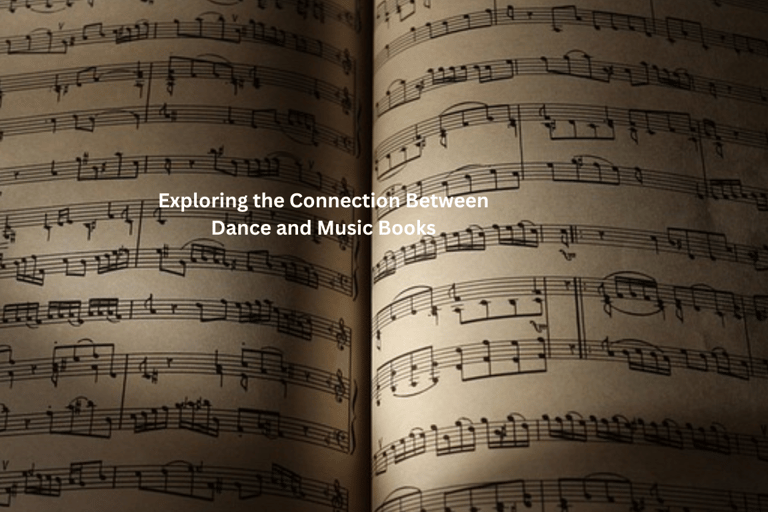Exploring the Connection Between Dance and Music Books That Examine the Relationship
1/24/20255 min read


Exploring the Connection Between Dance and Music: Books That Examine the Relationship"
It crosses culture, age, and genre since dance and music have crossed every boundary known to man over the centuries. Often, the rhythm of the music inspires the dance, but choreographed dance can also rip the musicality that makes both a more delectable art experience. Hence, understood, this connection opens up our appreciation for the art of life and is rich in information about man's capacity to create and express.
This article will explore the profound link between dance and music, discuss their historical and cultural significance, and highlights books that examine this fascinating relationship.
The Historical and Cultural Ties Between Dance and Music
Ancient Origins
Ancient origins of dance and music: Earlier civilizations used ritual dances and drumming to enrich their communications, storytelling, and spiritual deliverance. This is where the Old World as a whole conducted congregations, religious ceremonies, and celebrations that were full of music and dances.
For instance, African drumming with traditional dances narrates the stories of the culture and the group identity. In ancient Greece, dance was an element of a theatrical performance, done with choreography and live accompaniment.
Evolution Throughout the Ages
With man, music and dance also evolved. In the Baroque period, courtly dances—the minuet and the gavotte evolved into music by Johann Sebastian Bach. In the Renaissance art culmination, the maturity of ballet was found, which was developed by the masters Tchaikovsky and Stravinsky along with choreographers.
The style of interplay and dynamics involved in movement remains the same as in the present era for jazz, hip-hop, and EDM genres. The international success of these genres is self-testifying through the broader universal appeal of dance and music as a unit.
The Psychology of the Relationship
Rhythmic In-Sync Movements
First and foremost, it is impossible to distinguish music from dance because the human brain involuntarily reacts to rhythm. The world of neuroscience provides tremendous evidence of this: rhythmic beats actually stimulate areas of the motor sites of the brain and get people to move around.
Emotional Expression
Music and dance are good tools for expressing emotions. Music uses melody, harmony, and rhythm to communicate. Dance is movement, a direct expression of emotion. Together, they form a multidimensional experience that is felt deep within any audience.
Social Bonding
Socially, dances and music connect people and groups. While the old folk dances pave the way for today's flash mobs, group dances have taken on significant roles in making bondage among humans and communities but play an essential role within one's identity or heritage.
Some books to consider for your learning of dances and their association with music:
1. "Dance and Music: A Guide to Inspired Performance" by Harriet Cavalli.
It is beneficial to have on stage for the dancing and musicians themselves. In her book about cooperation processes among dancers and musicians and how dance music inspires itself and music dance, the tips that may help any performance interpret a score, knowing their rhythm, are well described.
2. "The Routledge Dance Studies Reader" by Alexandra Carter and Janet O'Shea
The essays are by outstanding dance scholars working across the various planes of dance discourse, including relation with music. Book issues include the influence of culture and historical context and what role music should play in defining choreography-the whole thing offered in a reasonably balanced view.
3. "Music and the Dance: The Story of Dance Music" by Eric Blom
Eric Blom's long work in "The Development of Dance Music from Early Times to Modern Jazz and Swing. The book, however succeeds in chronicling through the ages those changes in musical and dancing expression.
4. Robert Starer-"Rhythmic Training
This book is about music, but Robert Starer's "Rhythmic Training" can be the motherlode for a dancer who requires the essence of rhythm. It develops the reader's timing and creates the proper choreography for synchronized performances.
5. Choreomusicology: Understanding the Relationship Between Music and Dance by Paul Hodgins
This term, choreomusicology, was developed by Paul Hodgins to refer to the study of how the interplay of music and dance functions. The book will thus offer a theoretical framework for this relationship, especially for researchers.
Modern Dance and Technology in Music
Digital Choreography Tools
It has transformed the procedure through which a choreographer and a musician combine. Now, as they possess MotionComposer and DanceForms, they can visualize movement and experiment in complete sync with music. Thus, it is a new pathway of creativity.
Electronic Dance Music (EDM)
EDM is another bright example of changes in relations between technology and other dancing kinds. Pulsating rhythms and beats create a groundwork where one does co-create dancing and the DJs sometimes, with amplified experiences, light shows and visual effects set in perfect rhythm and alignment.
Social media applications like TikTok and YouTube will create more space for dance and music. For example, Viral dance challenges with wonderful melodies reflect the marriage of sounds to movement. Its history will endure all that is in the universe.
More love for Dance and Music
Attend live concerts. Using magic dances, ballet, and recitals, perform live music to the audience.
Learn a Dance Style: Take a dance class and learn how to get in the mood by listening to music.
Listen to different types of music and see how they inspire different dance styles.
Read about connection: Read the books above to better understand the historical, cultural, and psychological aspects of the relationship.
FAQs
1. Why is music important in dance?
Music supplies the rhythm and atmosphere to inspire action, instruct the dancers, and lend credibility to the performance. This makes the performance emotive for both participants and spectators.
2. Can one dance without music?
Music is a foundation of dance but is by no means essential. Silent or improvisational contemporary dance consists only of movement and relies on internal rhythms or environmental sounds.
3. What considerations affect a choreographer's decision on the music for a dance?
In general, rhythm, mood, and thematic appropriateness decide the music for the choreographer's envisioned narrative or the emotional feel for the dance.
4. What is choreomusicology?
Choreomusicology is the study of the relations between music and dance. It investigates interactions, influences, and intertwinements of each other of music and dance art forms.
5. How is the role of music different from that of dance, given the revolution brought about by technological changes?
Digital technologies employed in choreography, electronic music composition, and virtual media for exhibiting works before an international audience have broadened the horizons of creativity.
The tie between dance and music proves a human's need to communicate and connect. Analyzing the history behind psychological insight and artistic viewpoint regarding this interconnection of the arts increases the value of appreciating how much interconnection benefits one's life. These books are the perfect reference material for any party investigating this incredible interaction. This interplay is inspirational and discovery-full for anyone—be he the dancer, the musician, or the appreciative viewer.







